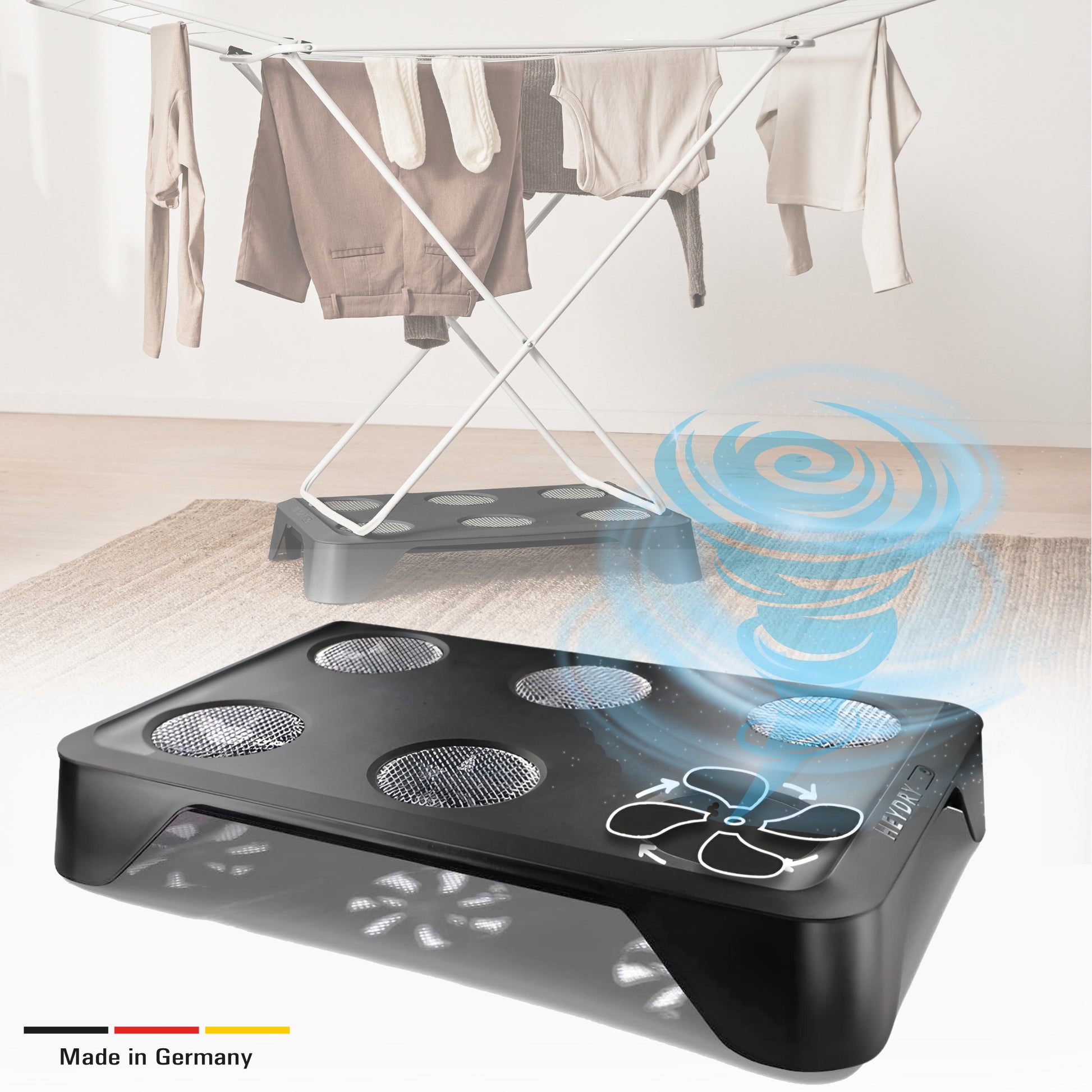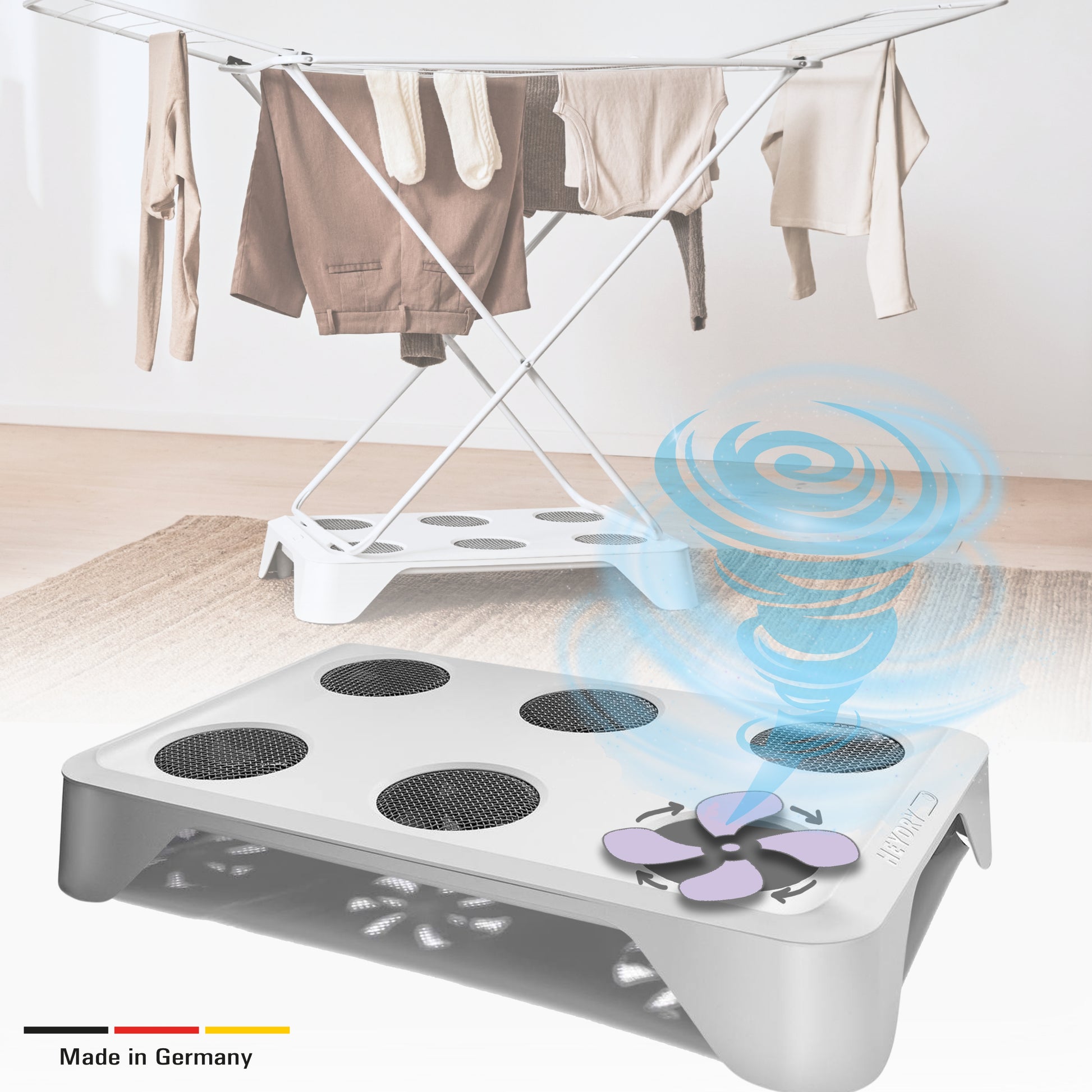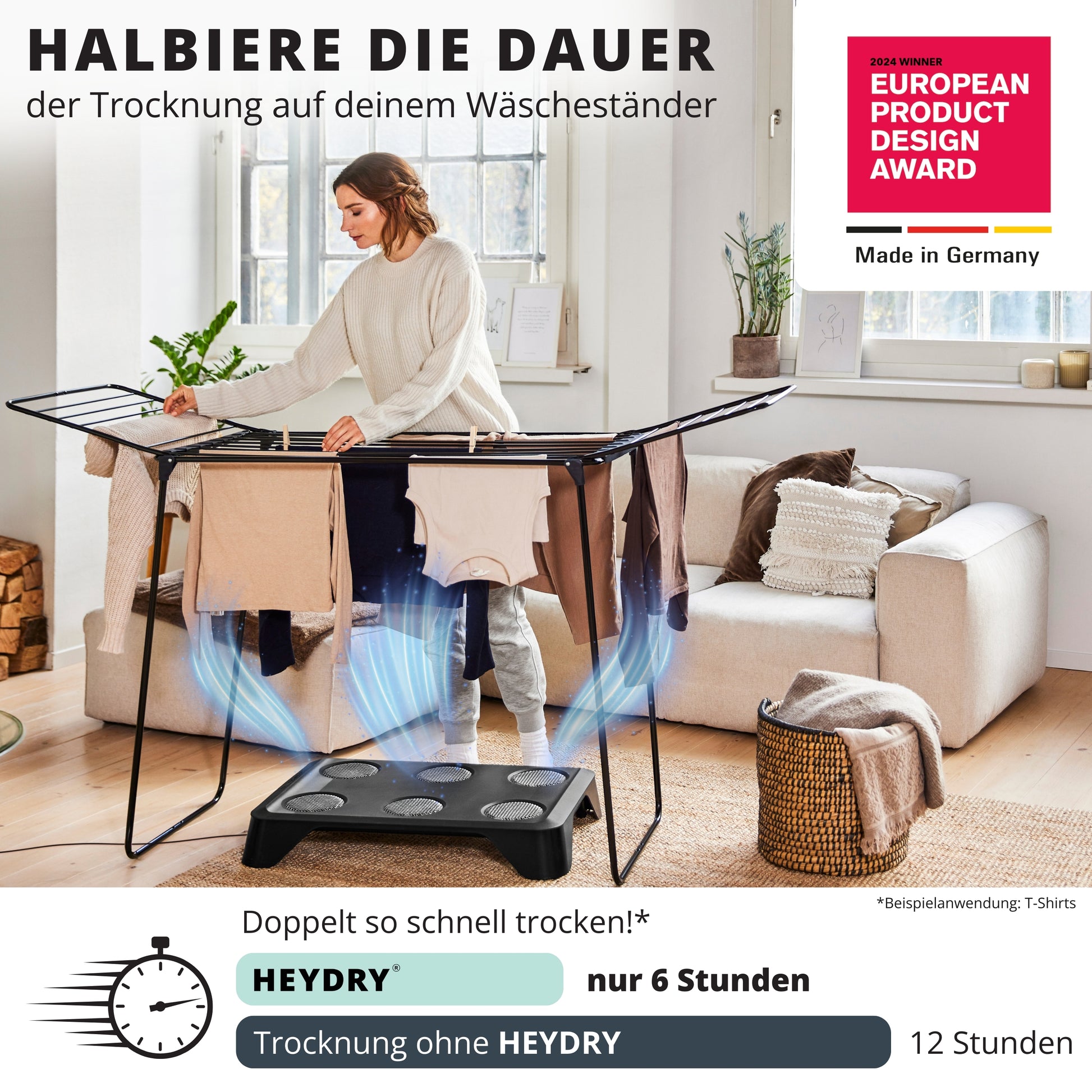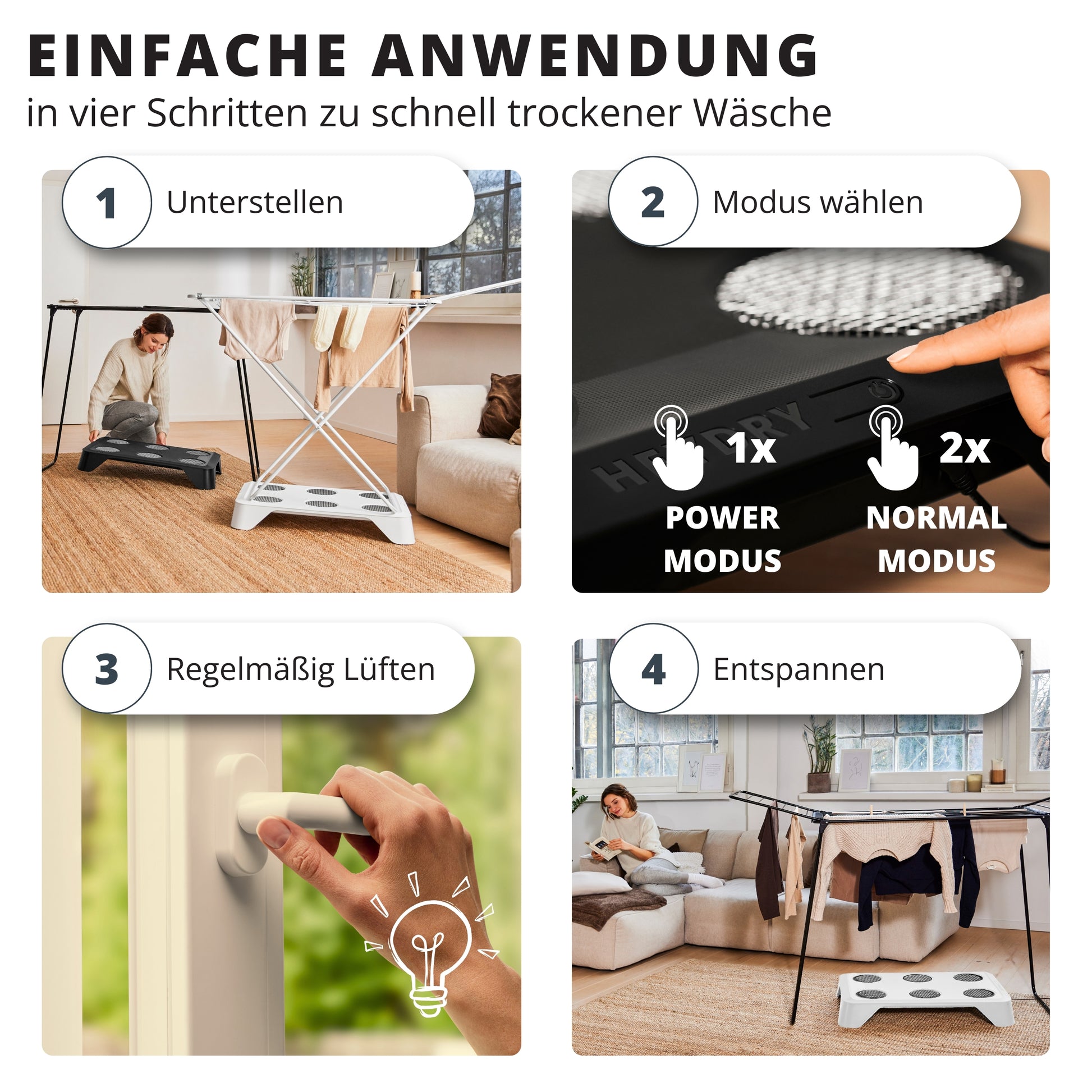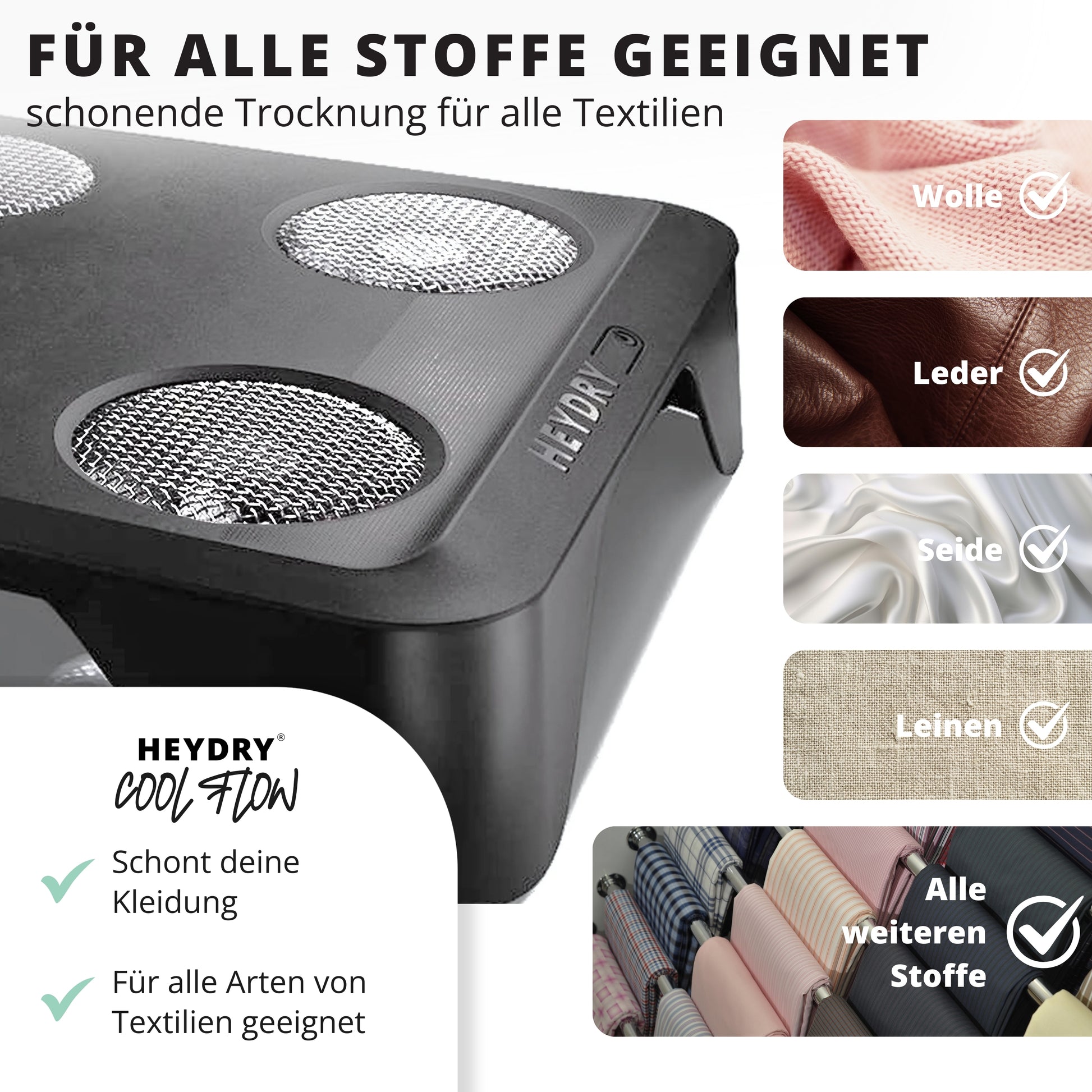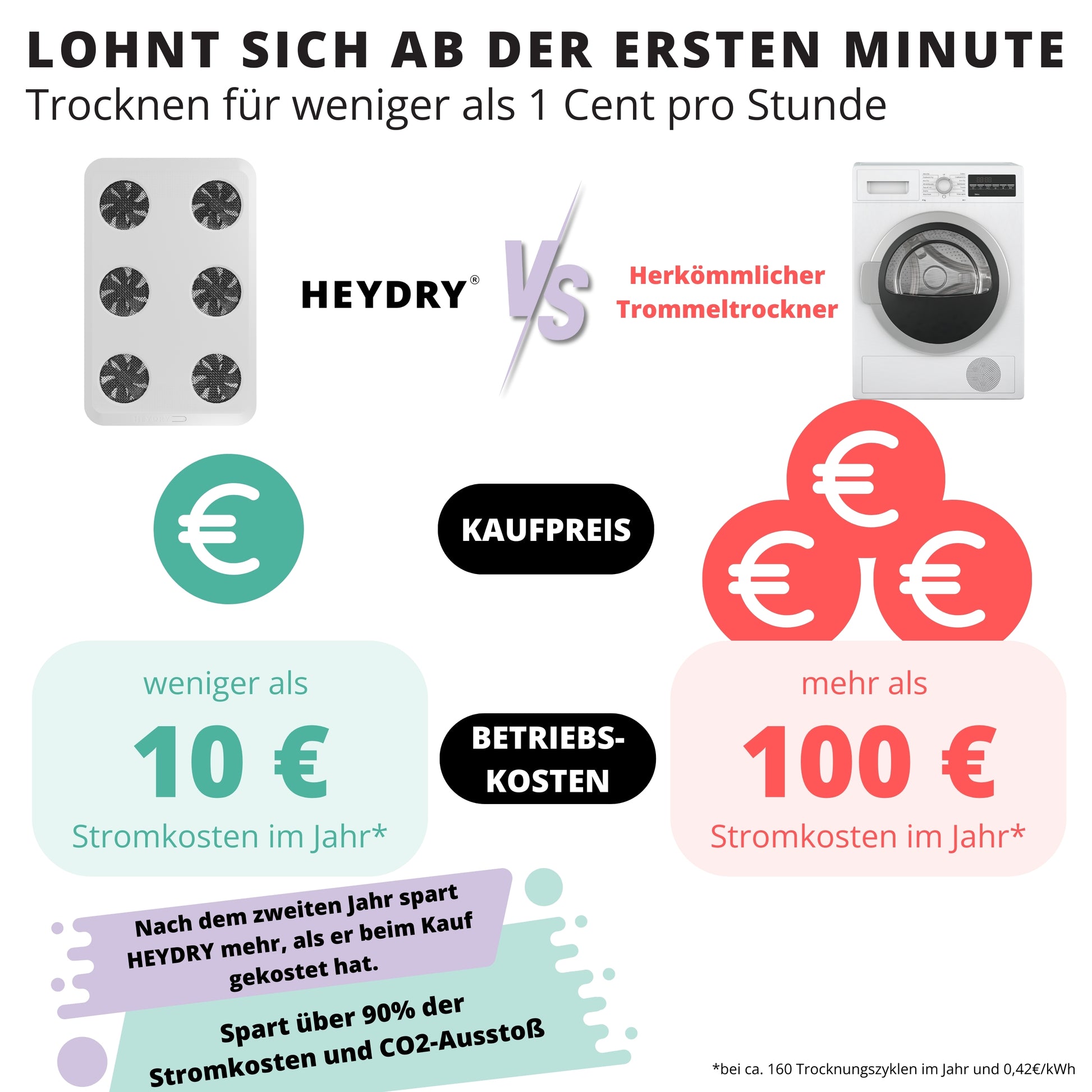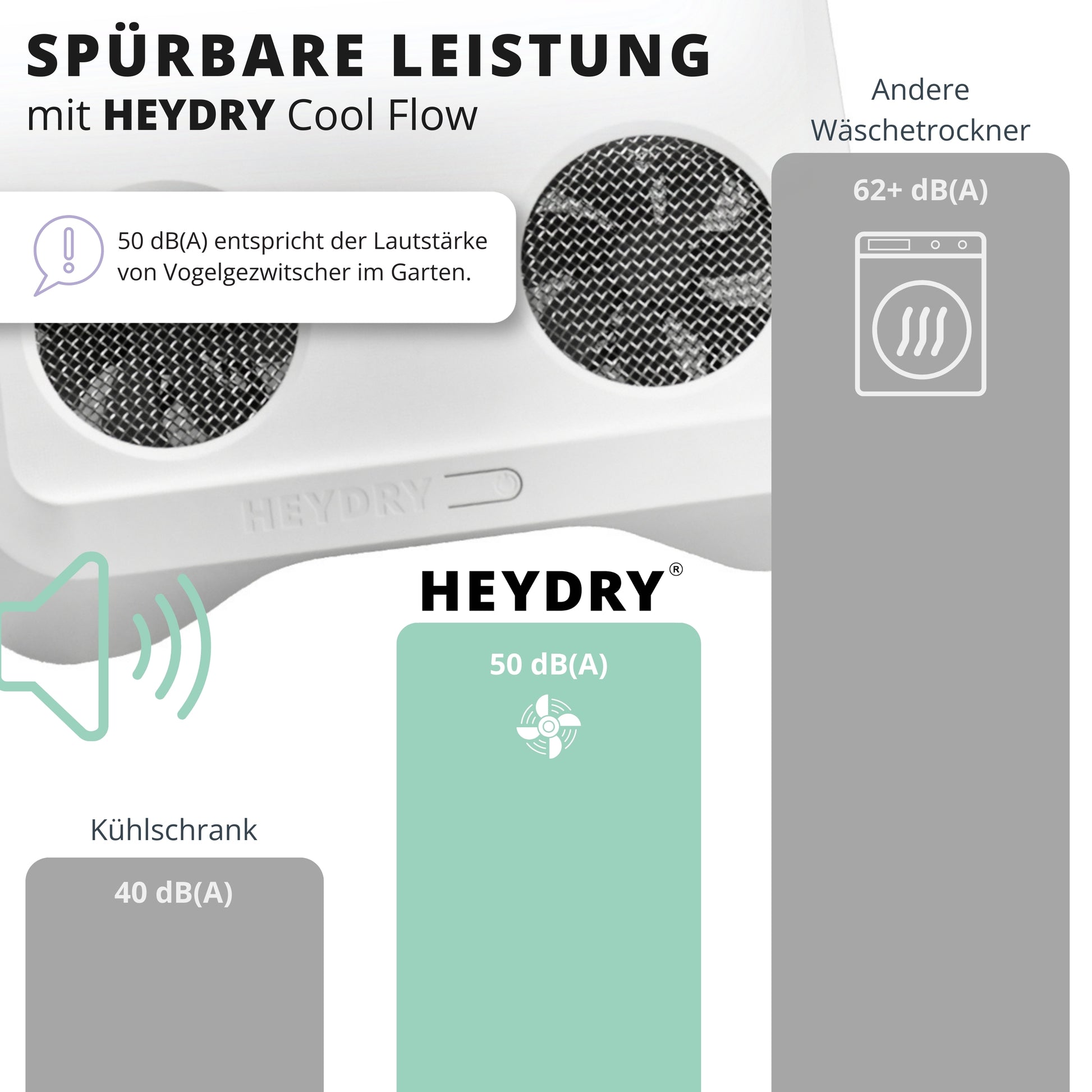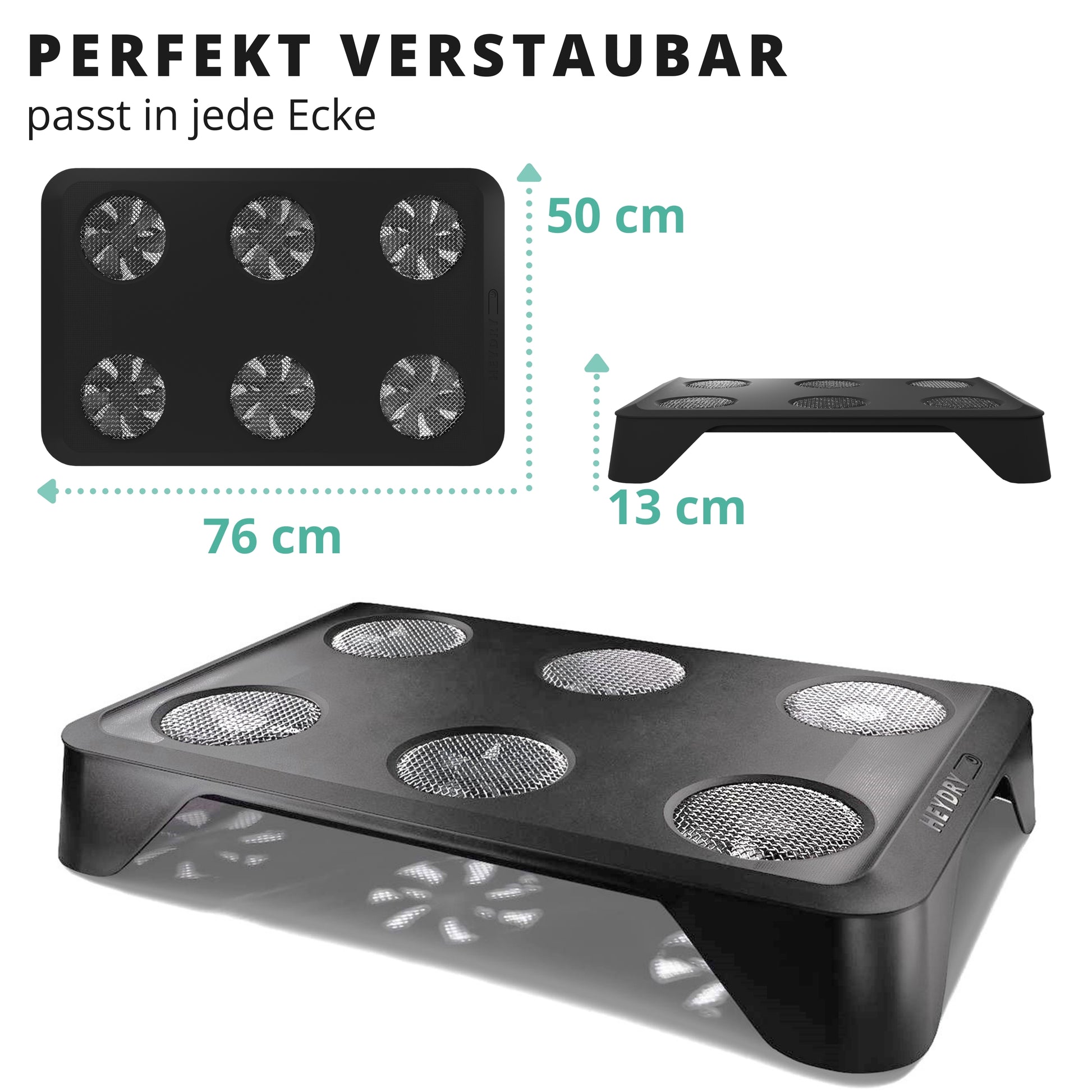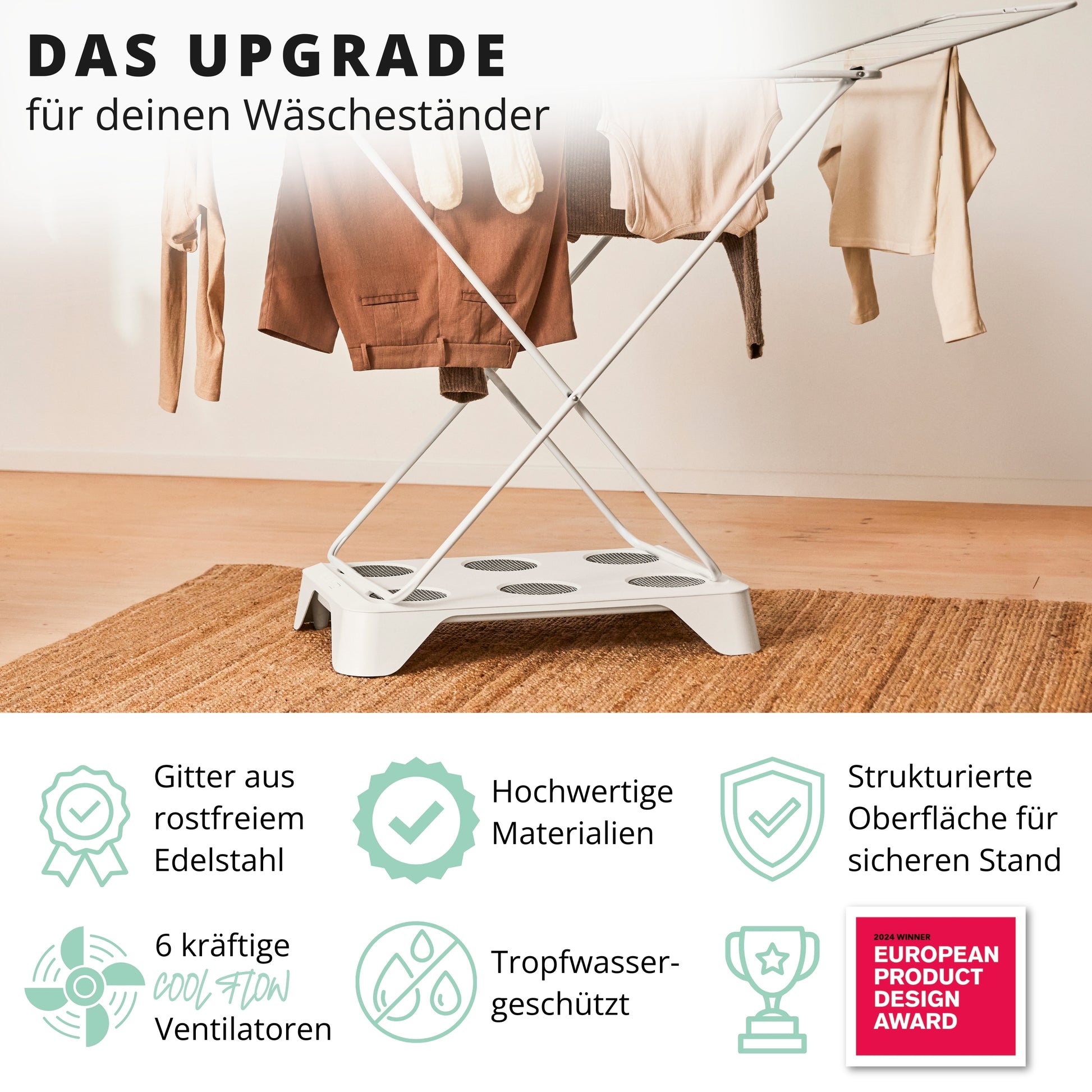
Buying a tumble dryer - what you need to know
Share
Imagine you've just taken your freshly washed laundry out of the washing machine. You want to dry it as quickly and efficiently as possible without using a lot of energy or damaging your clothes. A tumble dryer is the perfect solution. But which dryer is right for you? And are there alternatives to the drum dryer?
The different types of tumble dryers
First of all, it's important to know that there are different types of tumble dryers that differ in their functionality and energy efficiency. The most common models are:
- Condensation dryers: These dryers direct the moist air created during drying into a condenser, where it is cooled and condenses into water. The water is then collected in a container or drained away via a drain. Condensation dryers are generally cheaper to purchase than heat-pump dryers, but they consume more energy.
- Heat-pump dryers: These dryers use a heat pump to heat the air and remove moisture. This makes them significantly more energy-efficient than condenser dryers and gentler on clothes. However, they are generally more expensive to purchase.
- Vented dryers: These dryers vent the moist air outside via an exhaust hose. They are relatively inexpensive but require a nearby exhaust connection.
What you should pay attention to when buying
When buying a tumble dryer, you should pay attention to the following factors:
- Energy efficiency: Pay attention to the dryer's energy label. The higher the energy efficiency class (A+++ to D), the less electricity the appliance consumes. Heat-pump dryers have a clear advantage here. A tumble dryer can easily add up to over €100 per year in electricity costs.
- Capacity: The dryer's capacity indicates how many kilograms of laundry you can dry at once. Choose the capacity that best suits your washing machine and the amount of laundry you have. For a single household, 5-6 kg is often sufficient, while families need 7-9 kg.
- Programs: Modern dryers offer a variety of programs for different fabric types and dryness levels. Consider which programs you really need. Caution is advised with delicate fabrics like wool or silk. There are often special programs for these fabrics, but not all laundry should be put in the dryer.
- Noise level: Dryers can be quite loud (approximately 62 dB(A). Be careful of the noise level, especially if you plan to place the dryer near living spaces.
- Additional functions: Many dryers offer practical additional features such as a start timer, a residual moisture indicator, or an anti-crease function. These can increase ease of use.
- Price: Price naturally also plays a role in your decision. Consider which features are important to you and how much you're willing to spend.
Tips for using your tumble dryer
- Cleaning: Clean your dryer regularly to maintain drying performance and reduce energy consumption. Lint and other debris can reduce dryer efficiency.
- Load: Don't overload the dryer to allow air to circulate and dry clothes evenly. Too much laundry can also increase drying time.
- Fabric types: Make sure you only put fabrics in the dryer that are suitable for it. Some fabrics can shrink or become damaged. Find out beforehand which fabrics are safe to put in the dryer.
- Dryness level: Choose the right dryness level for your laundry. It doesn't always have to be completely dry. Sometimes it's enough to just dry slightly before hanging it up.
Alternative tumble dryers
In our opinion, there's only one real alternative to the conventional drum dryer. :) But more on that in a moment. There are many different methods on the market that attempt to compete with the conventional dryer.
- Clothes racks with heated clotheslines: These only heat the laundry on the bars. To dry faster, the laundry needs to be moved every few minutes to ensure even drying. The heating of the fabrics in certain areas can also damage delicate fibers, damaging your clothes. These dryers also consume a good 200 watts. If you dry clothes more often, you'll notice a noticeable increase in electricity consumption and a higher electricity bill!
- Laundry cabinets with heaters: There are also laundry cabinets that have a sheet placed over the clothes rack, and a fan heater circulates warm air underneath. These devices consume up to 2,000 watts of power. An hour of operation can easily cost you over 0.60 cents! Furthermore, their size and construction make them very bulky and difficult to store (approximately 1.5 meters high, up to 60 cm wide).
In our view, the HEYDRY is the only viable alternative. And for simple and practical reasons:
- 1) It costs only a small part of a drum dryer
- The Cool Flow air circulation with room air dries the laundry gently.
- Because no heat is generated, HEYDRY costs less than €0.01 per operating hour, as it only uses 18 watts of power.
- The HEYDRY is compact and easy to store, making it ideal for use in small apartments
- In the end, only one thing counts: the laundry on the clothes rack dries twice as fast.
- ... and he also cuts a good figure.


